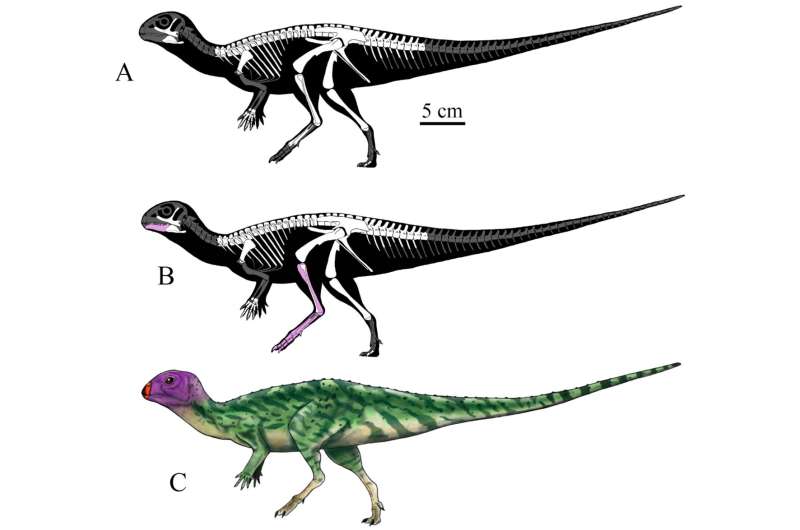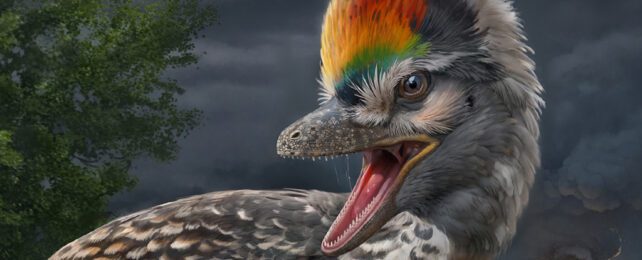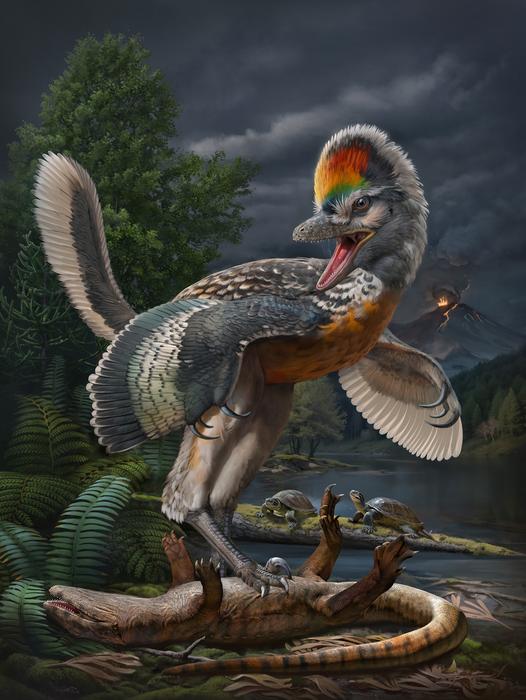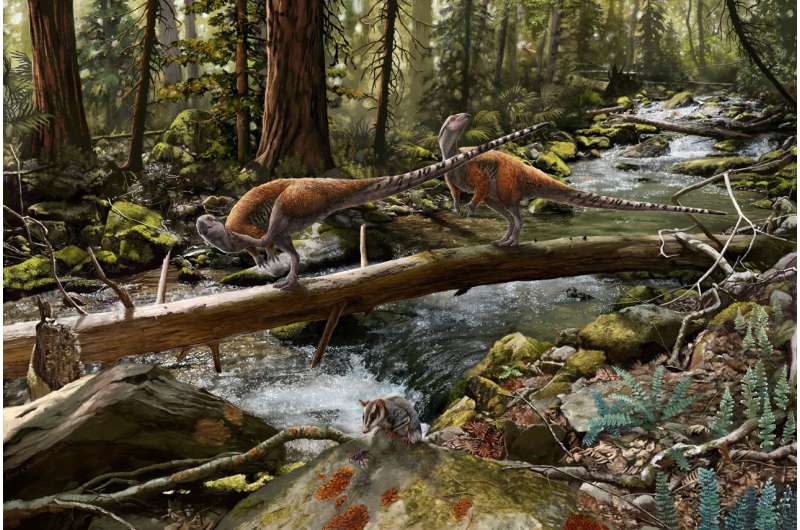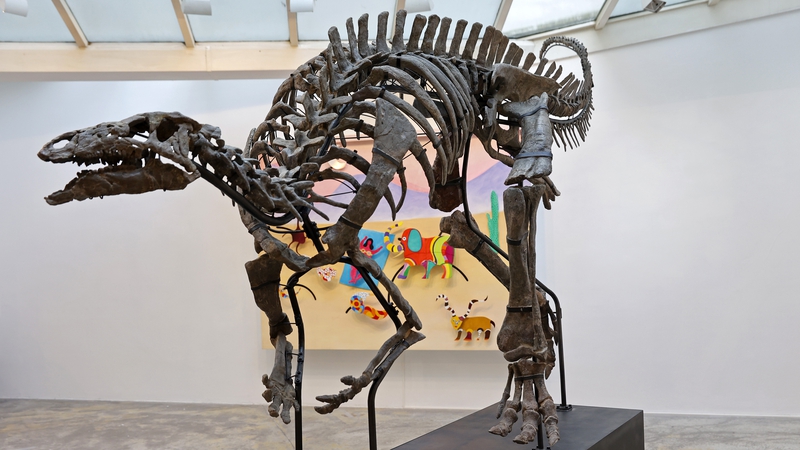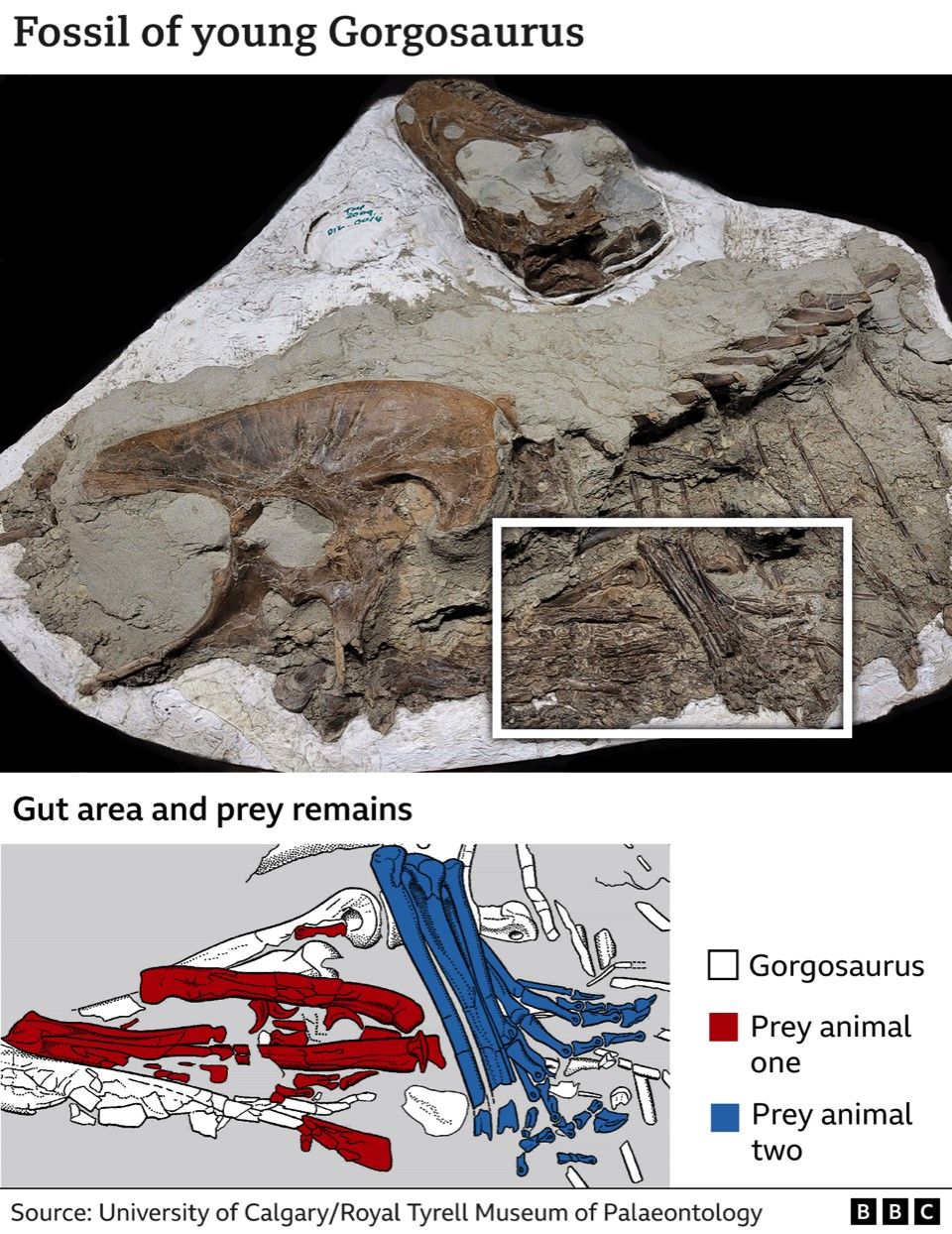Science 'could lose' duelling dinos
By Simon Redfern, Science reporter, BBC News
Rare dinosaur remains could be forever lost to the scientific community when they go under the hammer in November.
The remarkably preserved fossils of two "duelling" dinosaurs frozen in a death clinch could fetch up to $10m.
But scientists want the opportunity to examine the specimens of the tyrannosaur, which appears to have bitten off more than it could chew.
Details of the discovery, from Montana, US, were discussed at the British Science Festival in Newcastle.
The large arms and thin head of this most complete tyrannosaur ever discovered suggest it is a new species, called Nanotyrannus, living alongside and related to T. rex.
The observations were made by Dr Phil Manning of Manchester University.
Some 65 to 67 million years ago, in an area that now lies the middle of Montana, T. rex was the top predator of the ecosystem. Dr Manning has just returned from an excavation of a new T. rex skeleton that he is preparing for a museum in Leiden, Germany.
Fossil fragments of T. rex are found throughout the rocks called the "Hell Creek Formation" in Montana,
but never before has an entire tyrannosaur skeleton been found.
Only two T. rex skeletons that are more than half complete have been ever been recovered. The Fields Museum in Chicago has the most complete T. rex, at 85% of a skeleton, which was bought at auction for a record sum, and the Black Hills Museum in South Dakota has a 65% complete T. rex.
There has been great excitement, therefore, over the recent excavation of an entire and complete tyrannosaur predator from the Hell Creek Formation. More than that, it was found forever frozen in a linked death clasp with its prey, a complete Triceratops.
Dr Phil Manning from the University of Manchester explained at the British Science Festival in Newcastle how new observations show a tooth from the tyrannosaur embedded between the neck vertebrae of the Triceratops, while the skull of the tyrannosaur appears to have been shattered by a blow from the Triceratops.
"It was a bad day for both of them" quipped Dr Manning. "These animals could have been fighting on the banks of a river. They both became mortally injured." They were then rapidly buried and preserved as fossils.
But there is more to this remarkable death duelling pair than the preservation of their last moments as entire skeletons. The preservation also solves a longstanding scientific question.
In 1988, a similar skull bone from a predatory dinosaur was identified as a distinct species, which was then named Nanotyrannus, but the identification from one skull fossil was not widely accepted, with many suggesting that this was simply a young T. rex.
The dispute over whether a second large predator lived alongside T. Rex has rumbled on over the last decades, but Dr Manning's observations of the new entire skeleton help resolve the issue.
T. rex has some notable distinctive features, one of which is its very small arms. Dr Phil Manning has just returned from a visit to inspect the new specimen from Montana, and described its very large fore arms.
Despite being about half the body size of an adult T. rex the arms of Nanotyrannus are noticeably larger than those of T. rex.
Nanotyrannus is characterised by Dr Manning as having its own ecological niche, with a long swan-like neck, relatively large fore arms, and a narrower gracile skull. "If you think of the savannah of Africa today, the lion is taking down the big prey and the cheetah is maybe taking down the small prey. Maybe we are looking at the cheetah of the Cretaceous here: we've got similar niche partitioning of the ecosystem that existed 65 to 67 million years ago".
"When you have a big predator, like T. rex, it means that you have a healthy established ecosystem. So it's not surprising to find a more complex system in place at the end of the Cretaceous" Dr Manning explained.
Dr David Norman of the University of Cambridge was not involved in the study. He commented to the BBC "A really nice skull has been described previously, and looks rather low and long compared to a classic T. rex skull, which led to the suggestion of Nanotyrannus.
"If this new specimen has larger forelimbs and a gracile skull on a more slender swan-like neck, it provides plausible reasons to substantiate the idea that this is a new genus."
The remarkable specimen was discovered on private land by an independent fossil collector, and is now being offered for sale by auction. It is expected to fetch as much as $10m dollars when it goes under the hammer in November.
The scientific community demands that original research material like this sample be deposited in accessible museum collections if the description or discoveries of new species or genus are to be accepted, to allow observations to be verified and studied openly by others.
The auction of the Nanotyrannus - Triceratops pair may yet stymie the acceptance of Nanotyrannus as a new species. If it goes to a private collection it will no longer be available to science, and the unique observations made thus far will never be subject to peer-scrutiny.
The whole issue of the commercialisation of fossil discovery is raising concerns among palaeontologists and other scientists, and may hinder future discovery, they say.
Discussing the issue, Dr Norman commented: "This is the most distasteful part of it. Ever since the T. rex was sold to the Fields Museum in Chicago for $8m, the commercial value of fossils has been hyped.
"This spiralling effect means that more and more scientifically important objects risk being removed from the community for scientific study. They fall into private hands because they become objects d'art.
"It destroys the whole ethos of the availability of specimens. These fossils were left by Nature, shouldn't they be available to be appreciated and studied by everybody, rather than falling into private hands?
"There are national issues about how fossils are sold and valued that vary from country to country. It is becoming a minefield now that fossils can have a high value, and makes it a curatorial nightmare for museums."
http://www.bbc.co.uk/news/science-environment-24033966


